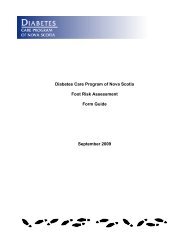CDE Appendix 1 Literature Review - Central East Local Health ...
CDE Appendix 1 Literature Review - Central East Local Health ...
CDE Appendix 1 Literature Review - Central East Local Health ...
You also want an ePaper? Increase the reach of your titles
YUMPU automatically turns print PDFs into web optimized ePapers that Google loves.
The Culture, Diversity and Equity Project: <strong>Literature</strong> <strong>Review</strong><br />
This framework and the specific ternary of competencies within each of these framework pillars are presented in full<br />
in <strong>Appendix</strong> 5.<br />
5.2 CULTURAL COMPETENCE TRAINING STANDARDS & QUALITY ASSURANCE<br />
US post-secondary educational institutions have been at the forefront of developing and incorporating cultural<br />
competence modules into the standard educational curriculum for medical/health-care professionals in training. A<br />
2004 paper in the Journal of the American Medical Association for instance found that among close to 8,000<br />
graduate medical educational programs surveyed in the United States, 50.7 percent offered cultural competence<br />
training in 2003–2004, up from 35.7 percent in 2000–2001 (Brotherton, 2004; cited in Betancourt et al., 2005).<br />
Betancourt et al. (2005) attribute this transformation to a combination of ‘stick’ and ‘carrot’ approaches.<br />
The ‘stick’, in this respect, has taken the form of increasing regulatory pressures since 2002, particularly in the form<br />
of accreditation standards. In 2002, the Liaison Committee on Medical Education (LCME) introduced the first<br />
official cultural competence accreditation standards, and required all medical schools to integrate these into their<br />
curricula.<br />
The Accreditation Council of Graduate Medical Education (ACGME) has also introduced cultural competence<br />
standards for residency programs (see ACGME, 2004). New Jersey has gone even further with the stick approach<br />
and passed legislation in 2005 that requires cultural competence education as a requirement for the licensure of<br />
health care professionals (see Salas-Lopez et al., 2007; also see Baquet et al., 2004).<br />
Exemplifying the ‘carrot’ approach, which has also helped to move the medical education field forward in the area<br />
of cultural competence, the New York State of <strong>Health</strong> modified its $33 million per year Graduate Medical Education<br />
Reform Incentive Pool in 2004 to ‘reward residency programs that provided eight hours of cultural competence<br />
training to at least 80 percent of residents’ (New York Dept of <strong>Health</strong> 2004; cited in Betancourt et al., 2005).<br />
Demonstrating the effectiveness of this ‘carrot’ approach, “[i]n the first year, 66 of the 104 residency programs in<br />
New York State proposed new cultural competence curricula” (ibid.).<br />
Cultural competence training outside of post-secondary educational contexts, for practicing healthcare professionals,<br />
contrastingly, remains “haphazard and varying in quality”, in no small part due to the lack of agreed upon standards<br />
and evaluative criteria by which to assess cultural competence training in such contexts (California Endowment,<br />
2003).<br />
The development of such training standards in continuous professional education and development contexts is a key<br />
area for future research. In the meantime, educational standards and evaluative tools (such as the TACCT; see<br />
below) of cultural competence borrowed from post-secondary educational contexts and curricula could be adapted to<br />
continuous learning contexts.<br />
Aside from the Association for Multicultural Counselling and Development’s Multicultural Counselling<br />
Competencies, which have been proposed by Sue et al. (1998) as standards for the American Counselling<br />
Association but not adopted, the only other proposed ‘standards’ for cultural competency training discovered in the<br />
literature derive from the California Endowment’s (2003) Report, Principles and Recommended Standards for<br />
Cultural Competence Education of <strong>Health</strong> Care Professionals. The recommendations from this report are explored<br />
below.<br />
Principles and Recommended Standards for Cultural Competence Education of <strong>Health</strong> Care Professionals.<br />
(California Endowment, 2003): The Principles and Standards recommended in the 2003 California Endowment<br />
report are designed to accompany the Culturally and Linguistically Appropriate Services in <strong>Health</strong> Care (CLAS<br />
Standards) adopted by the Office of Minority <strong>Health</strong> in 2002. Intended for “persons who are charged with direct<br />
patient care and the delivery of health care services” (CE, 2003), the standards “provide guidance as to the general<br />
content and organization of educational programs” (ibid.). The Reports authors thus advise that “experts in specific<br />
health care disciplines” be consulted to integrate relevant subject matter into the suggested framework of standards<br />
101

















